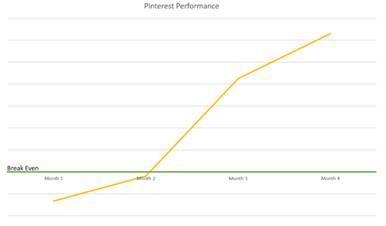Thanks to a considerable amount of sass over the past few weeks, the MoonPie Twitter account has earned a fair amount of attention. Witty remarks from the social media team have been directed at everyone from competitors to other brands and even singer Lana Del Rey—much to the delight of Twitter fans looking on.
It all started on August 21, the day of the solar eclipse. Like many brands, Hostess used the occasion to market its products—and MoonPie took the opportunity to make a joke out of it. Two-word responses were enough to get the internet laughing, and Time even picked up on the attention, adding momentum to the online “feud.”
Lol ok https://t.co/lobyuNOkee
— MoonPie (@MoonPie) August 21, 2017
The now infamous exchange wasn’t MoonPie’s first attempts at sarcasm on Twitter, but poking fun at a direct competitor made all the difference when it comes to audience engagement. Even brands jumped into the conversation, including Wendy’s—a brand famous for its snarky comments and fearless burns on social media.
We weren't about to get punked by MoonPie too! Come see us when the cow jumps over the moon.
— Wendy’s (@Wendys) August 23, 2017
MoonPie has not only poked fun at its competitor but at the very idea of what it means to market a brand on social, admitting that it wants retweets and for images to “go viral.”
I'm a:
⚪️ man
⚪️ woman
🔘 brandSeeking:
⚪️ men
⚪️ women
🔘 retweets and attention— MoonPie (@MoonPie) August 23, 2017
When a brand gets witty on Twitter, it’s certainly entertaining and there is value in creating brand loyalty through humor. To calculate how much MoonPie would have had to spend to achieve the same kind of attention, we calculated the earned media value from the now infamous Hostess tweet all the way until September 11.
“Earned media” is the value of engagements a brand receives across channels as a result of their marketing efforts. To help quantify what the value of those engagements are worth, the Ayzenberg Group established the Ayzenberg Earned Media Value Index (AEMVI) and assigned a quantifiable dollar amount for marketing gains a brand receives from a campaign or individual engagement that includes social media networks and similar digital properties. (Editor’s note: AListDaily is the publishing arm of the Ayzenberg Group. To read the updated Ayzenberg Earned Media Value Index report reflecting the rapid changes in social, click here.)
Humor can be an effective way to reaching a diverse range of audiences, especially with Gen Z. A recent study by Kantar Millard Brown found that 72 percent of Gen Z said humor increases their receptivity to ads.
You: social media managers only exist to give faceless corporations annoying millennial voices and have no ROI
Me: actually… pic.twitter.com/XEyvG7JQt1
— MoonPie (@MoonPie) August 25, 2017
MoonPie is enjoying its media attention at a pivotal time for the brand, as it celebrates its 100th anniversary. Combining nostalgia and humor is attracting new followers—over 6,000 in the last three weeks alone.
Has branded content gone too far pic.twitter.com/X5cJQgaiFy
— MoonPie (@MoonPie) August 31, 2017
A case study by Twitter found that 69 percent of users are more likely to shop with interactive brands. In the age of Rick and Morty and a meme for every occasion, today’s consumers appreciate a well-timed sense of humor that is authentic and speaks to them.
Learn everything you need to know about turning insights into data at AList Sessions, a new invite-only event series for marketers, on October 26 in Los Angeles.
Go to sessions.alistdaily.com for more info.




